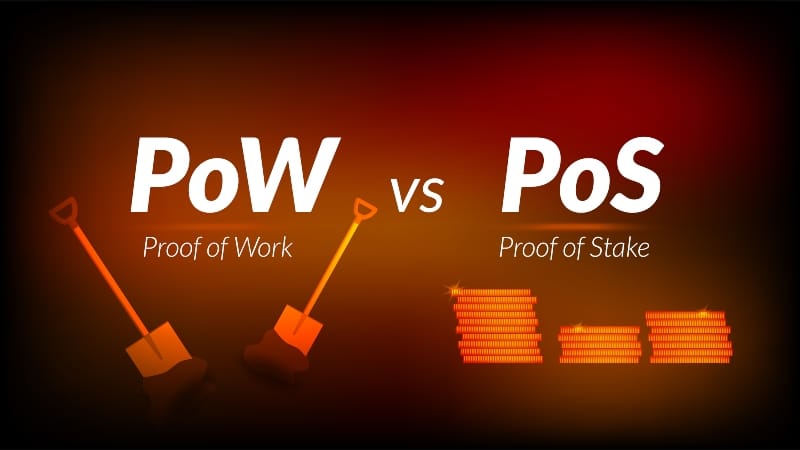What could happen if Bitcoin one day becomes PoS?
Bitcoin is a protocol that uses Proof-of-Work (PoW) as its consensus mechanism. This is a mechanism that involves significant power consumption which increases as the value of BTC rises, but at the same time guarantees it high immutability of the blockchain.
Other cryptocurrency protocols, on the other hand, use Proof-of-Stake (PoS) because it is a less energy-intensive mechanism and allows for faster block generation. However, it is somewhat less secure than PoW.
For example, Ethereum was born with PoW, but over the years decided to switch to PoS. Could something similar happen to Bitcoin?
What if Bitcoin becomes a PoS system?
As of today, the answer is definitely no.
In fact, no one has the power to arbitrarily change Bitcoin protocoland right now there is not a large majority of Bitcoin users who would accept such a radical change to it.
Switching from PoW to PoS requires a complete change in the system by which blocks are created, so much so that, for example, Ethereum even had to create a new PoS-based blockchain, deciding to abandon the old PoW-based one final exchange is made.
Perhaps the conditional is a must, in a relatively distant future, even for Bitcoin, a strong majority of users may arise, who would approve such a radical change, but as of today, we cannot even glimpse this scenario.
Also, although some argue that Bitcoin’s energy consumption will continue to increase at a high rate until the transition to PoS becomes necessary, in reality, however, Bitcoin mining’s energy consumption will decrease in the long term, due to the continued halving miner rewards once every 4 years.
That said, however, no one is forbidding to imagine purely theoretically what Bitcoin’s transition to PoS might entail.
In reality, it’s not that difficult. In fact, if the decision to replace PoW with PoS on Bitcoin as well, the process could even be very similar to that done by Ethereum.
However, PoW allows the block time, after which Bitcoin’s Monetary Policy depends, to be kept very constant over the years: a block is formed every 10 minutes or so, and a halving of BTC in premium each 210,000 blocks, or just under 4 years. With PoS, it may be more difficult to keep this monetary policy firm and rigid.

The disadvantages of Proof of Stake
The move to PoS would then create significant differences between nodes with more BTC in stake and the others. Right now, however, Bitcoin’s roughly 10,000 public nodes are the same, all with the same power. PoS, on the other hand, inevitably results in some nodes actually handling multiple tokens makes them somewhat more “powerful”.
It would certainly make miners disappear since PoS does not involve mining. This would suddenly and dramatically reduce energy consumptionwhich is currently perhaps the single biggest problem facing Bitcoin.
The fact that PoS turns out to provide slightly less security than PoW, on the other hand, might not even matter that much, because the current level of security is so high that even a slightly lower degree might be considered tolerable.
Instead, the fact that PoS protocols are often less decentralized could be a problem for Bitcoin, for example if a few large nodes with huge amounts of BTC immobilized in staking, and thus from large decision-making power, were to form.
Perhaps this is one of the main reasons why the majority of Bitcoin users do not want changes to the underlying protocol, because Bitcoin’s high degree of decentralization is precisely one of its greatest strengths, to be protected and maintained as much as possible.


